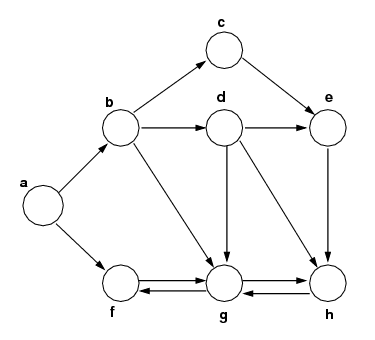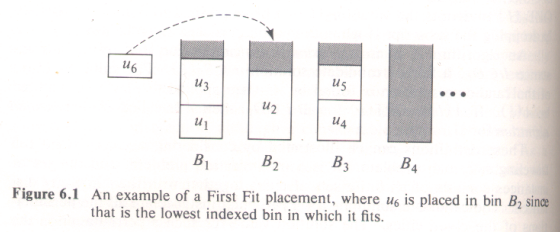- Show the result of inserting the following strings into a hash table using the given hash function values shown. They should be inserted in the order given, using open addressing to resolve collisions, and proceeding to the next lower address on each collision: hash(ralph)=8, hash(henry)=10, hash(wayne)=8, hash(roger)=10, hash(hamish)=9, hash(hortense)=7.
- What would happen if we deleted the entry for wayne? (That is, made it an empty entry, ready for a new insertion.)
- What is wrong with the following hash function,
used for a hash table of size 50, where the keys
are character strings. (The s.charAt(0) will use the
Ascii code for the 0th character,
so there's nothing wrong with that.)
int m = 50; // size of hash table public int hash(String s, int p, int m) { return (s.charAt(0) + s.charAt(s.length()-1))%m; }
- Give the algorithm that randomizes the order of the elements in an array. What is it's asymptotic (time) performance?
- What is the worst-case asymptotic (time) performance of quicksort?
- Explain how you could use Part i above to improve the performance of quicksort. What kind of time performance does this give? What "awkward" input case(s) does this help with? Does this step eliminate these cases altogether? If not, then why and how does this step help?
- Explain how the same technique would eliminate some of the same "awkward" input cases if one used a binary search tree for sorting. Also: how would you use a binary search tree for sorting? What kind of performance does this "tree sort" algorithm have?
- Your text's Randomized Quicksort is different from Parts i and iii above. Explain the additions to the quicksort algorithm that give Randomized Quicksort.


|
| |||||||||||||||||||||||||||||||||||||||||||||||||||||||||||||||||
- Is any problem in P (polynomial-time problems) also in NP?
- Is P the same as NP? Can you prove this?
- Give the "guessing-stage / checking-stage" definition that shows a problem is in NP.
- How would you use the definition in (iii) above to show that the problem Subset Sum (SS) is in NP? Here you start with a set A of positive integers and a given sum S. The problem is whether or not A has a subset A' whose numbers add up to S.
|
| ||||||||||||||||||||||||||||||||||||||||||
- Explain carefully what this mystery program does. What is its output and what actions does it go through to produce this output? (All tape squares outside those shown are zero.)
- Suppose the starting tape configuration were the following:
Initial ...00011100111000... tape: |
-
L1: find the square root of x, where 1/4 <= x <= 1.
L2: find the square root of x, where 0 < x.
- One of these reductions is trivial. Which one is "trivial" and why do I use that word.?
- The other is something that we proved. What rough technique did we use to prove it?
- Did the undirected graph of the 48 states have a Hamiltonian Cycle? Did it have a Hamiltonian Path?
- If you had a Hamiltonian Cycle in a Graph, explain how you could get a Hamiltonian Path.
- Does a complete graph always have a Hamiltonian Cycle?
- Let TS stand for the Traveling Salesman Problem. We proved something involving HC and TS. What was it?
- State an optimization problem that corresponds to the decision problem above.
- If we could solve the BP decision problem in time O(P(n)) for some polynomial p in the variable n, explain how we could solve the optimization problem in time O(P(n)*log(M)), where M is a number of bins that easily accommodates all the objects.
- There are several algorithms with give an approximate answer
to bin packing, though not the exact optimal answer.
One of these algorithms is called First Fit (FF).
It assumes that we have an infinite sequence
B1,B2,B3,... of unit-capacity
bins. The algorithm places objects int the bins, processing
objects in the order s1,s2,s3,...
and placing each object into the bin with lowest index into which it
will fit. Here's an illustration of this (where in this picture
sizes are denoted by ui):
